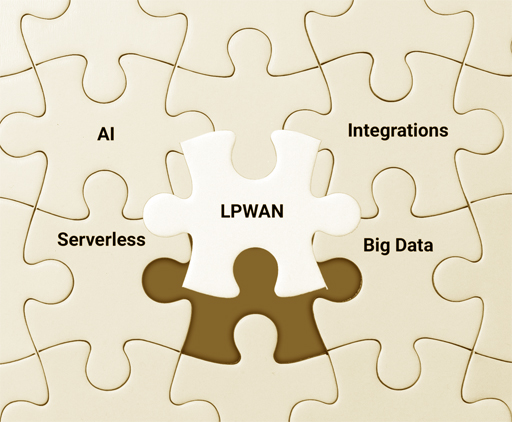Missing piece of the puzzle
- March 19, 2021
- Steve Rogerson

Managing LPWAN and the cloud together may about to become easier. IMC executive editor Steve Rogerson reports.
Why are we so excited about connecting everything? I stole that question from a presentation given this week by Marcin Nagy, IoT product director for AVSystem, a Poland-based device management company.
His answer was simple: Connecting everything changes everything. The IoT is all about making a digital transformation, jargon yes, but what that means is turning your business upside down; it is about making everything smart.
You see, the IoT is not just about your house turning the heating on just before you get home, though it can do that. It is not just about having a clever phone in your pocket that keeps you in touch with the latest football scores, though it can do that as well, and that is massive. I am old enough to remember when if you went abroad you sometimes had to wait days to find the football results from back home when eventually the printed newspapers arrived wherever you where. Remind me to tell you the anecdote about the Singapore taxi driver one day.
Anyway, I digress. Back to Nagy’s talk. The IoT is about getting everything smart – smart devices, smart machines, smart data, smart computing and, yes, a smart business. And even a smart doorbell. It is all about connecting and, just as important, controlling everything remotely.
And this is what makes it exciting, because all those data, all that control, all those insights, these can optimise a business in ways you once could not imagine.
So where does the cloud come in? This can be the enabler for that optimisation. It can be the source for the rapid delivery of services. Here Nagy, speaking at this week’s virtual, as is everything these days, IoT Tech Expo, took a step back to look at what makes up an IoT installation.
First, you have the devices at the edge that you need to connect and operate using the likes of Free RTOS, Azure Sphere and Azure IoT Edge. Then you have the analytics, analysing those data produced by the devices using products such as AWS IoT Analytics and Azure Time Series Insights. These let you work with the data faster to extract value. Finally, the cloud where Azure IoT Hub, AWS IoT Core and others let you secure, control and manage these devices.
Device management is important. It is about provisioning and authenticating the devices. It is about configuring them to the way you want to work and then controlling them when they are working. You need to monitor them to make sure they work as expected and find out what went wrong when they don’t. You want to upgrade them remotely and send security patches.
Time to talk about LPWAN, because this was designed specifically for the IoT in its various flavours. The licensed and unlicensed versions – such as LTE-M, NB-IoT, LoRa and so on – are what provide us with the low cost means to transmit small intermittent pieces of data using devices with incredibly long battery lives. This is what it is all about.
But, as Nagy said, there is a missing piece to this puzzle. There is a need for these communications to take advantage of cloud services. LPWAN and the cloud need to be managed together. There are existing ways to do that but Nagy described them as cumbersome and not very scalable.
Drum roll time. Nagy is a big fan of Lightweight M2M (LwM2M), what he describes as a modern device management protocol that is optimised for constrained devices, can be deployed in difficult networks, provides data monitoring capabilities and has a well-defined open data model. And there are no connection overheads.
Here. Nagy gave us a sneak preview of the firm’s latest advancement of its Coiote device management service. This is about to be launched to the world next Tuesday (23 March) and he believes it will fill that missing piece of the puzzle. Find out more in next week’s IMC IoT Newsdesk, after all you can’t have excitement without suspense.





